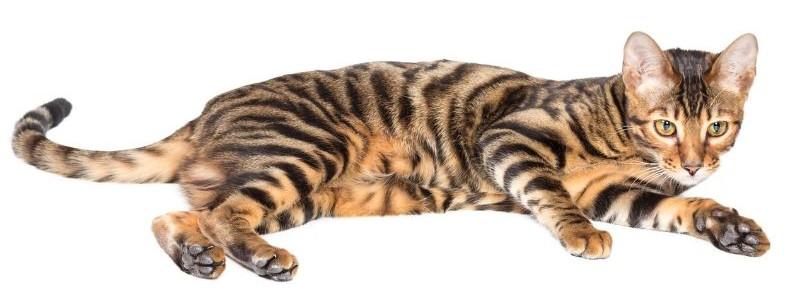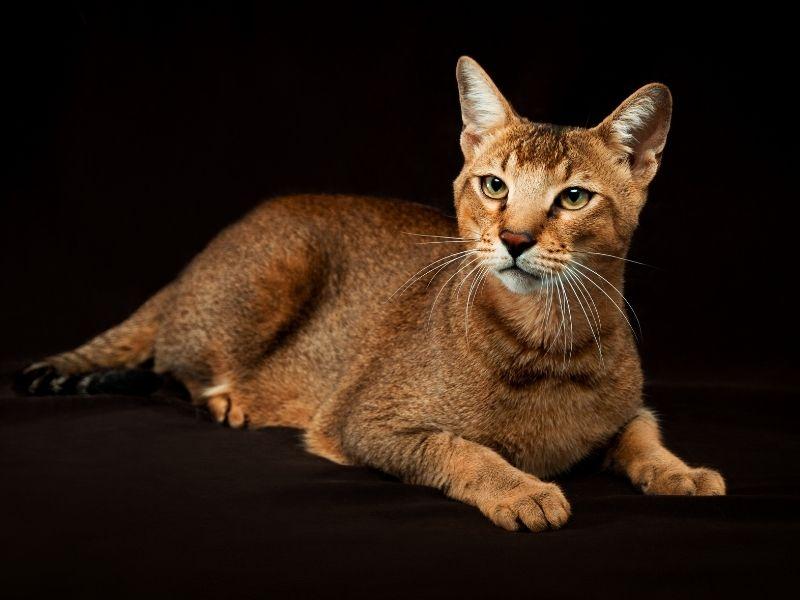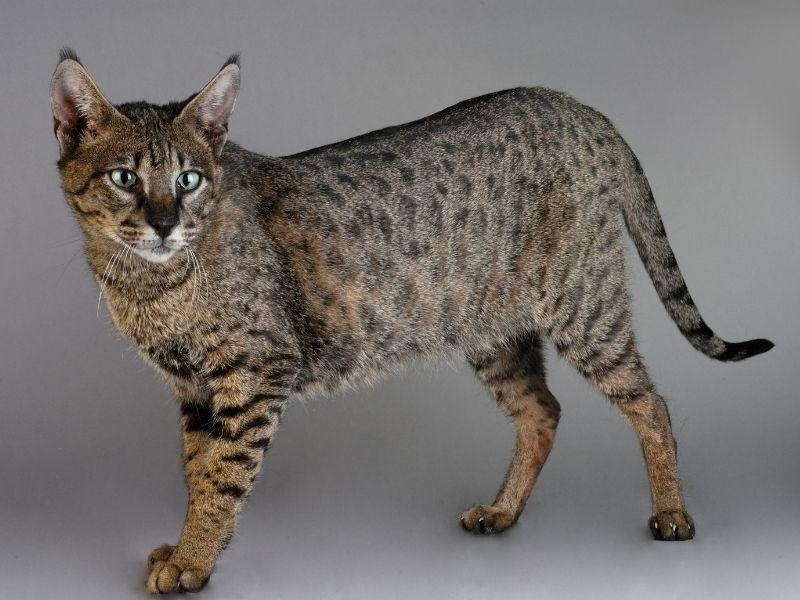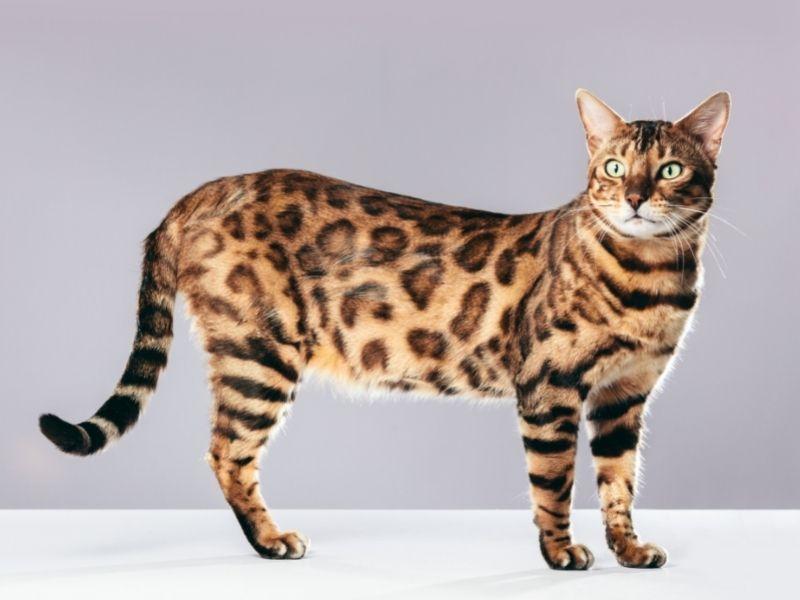When it comes to mixing different types of Cats, the results can be unpredictable. Some people may choose to mix a wild Cat breed with a domestic Cat breed because they believe that it will create a better pet. However, this is not always the case. In fact, when it comes to mixed breeds, there is no real way to predict how the Cat will behave or look.
Mixing Cats can also be dangerous, as there is a risk of the Cat contracting a disease from the wild Cat. There are also ethical concerns about keeping a wild animal in captivity. If you are considering mixing wild and domestic Cats, it is important to do your research and speak to a professional before making a decision.
Some of the factors to consider when mixing Cats include:
The temperament of the breeds of Cat you are mixing. The domestic Cat may be more aggressive than the wild Cat, for example. With this in mind, it is important to consider whether or not you will be able to handle an aggressive Cat.
The size of the breeds. A large domestic Cat may injure a smaller wild Cat, so it is important to make sure that the two Cats are of a similar size. When it comes to size, it is also important to consider the space you have available. A large Cat will need more space than a small Cat.
The health of the breeds. Some diseases are more common in certain breeds of Cats, so it is important to make sure that the two Cats are healthy before mixing them. If one of the Cats is sick, there is a risk that the other Cat will Catch the disease.
The energy levels of the two breeds. A high-energy domestic Cat may not be compatible with a low-energy wild Cat. It is important to consider whether or not you will be able to provide enough space and stimulation for a high-energy Cat.
When it comes to mixed breed Cats, there is no guarantee that the Cat will be a good pet. It is important to do your research and speak to a professional before making a decision. With the right care and attention, a mixed breed Cat can make a great pet.
Can You Buy a Wild/Domestic Mixed Breed Cat?
Yes, you can buy a wild/domestic mixed breed Cat. However, it is important to do your research before making a purchase. There are a number of factors to consider when buying a mixed breed Cat, including the temperament of the breeds, the size of the breeds, and the health of the breeds. It is also important to make sure that you will be able to provide the Cat with enough space and stimulation.
When buying a mixed breed Cat, it is important to speak to a breeder or a professional who can give you advice on the best type of Cat for your needs. It is also important that you are aware of the risks involved in mixing wild and domestic Cats.
It may be hard to find a breeder who is willing to sell you a mixed breed Cat. This is because there is no guarantee that the Cat will be a good pet. It is important to do your research and speak to a professional before making a decision.
What is a Pixie-Bob?
A Pixie-Bob is a type of mixed-breed Cat. Pixie-Bobs are bred from a domestic Cat and a Bobcat. They are one of the most popular mixed breed Cats in the United States.
Pixie-Bobs have a number of physical features that distinguish them from other breeds of Cats. They have short, thick fur, which can be any color except for white. They also have a prominent Bobcat-like tail.
Pixie-Bobs are a friendly breed of Cat and make good pets. They are active Cats and require a lot of stimulation. They are best suited to homes with large yards where they can roam around and play.
The size of a Pixie-Bob can vary depending on the mix of breeds used to create them. They can weigh anywhere from 6 to 18 pounds. Most Pixie-Bobs are between 10 and 15 pounds.
The most important thing to remember when buying a Pixie-Bob is that they are a mixed breed Cat. This means that there is no guarantee that the Cat will be a good pet. It is important to do your research and speak to a professional before making a decision.

What is a Bengal Cat?
A Bengal Cat is a type of mixed-breed Cat. They are bred from a domestic Cat and an Asian Leopard Cat. Bengal Cats are one of the most popular mixed breed Cats in the United States.
Bengal Cats have a number of physical features that distinguish them from other breeds of Cats. They have short, thick fur, which can be any color except for white. They also have spots or rosettes on their fur.
These Cats are also known for their high energy levels. Bengal Cats require a lot of stimulation and are best suited to homes with large yards where they can roam around and play.
The size of a Bengal Cat can vary depending on the mix of breeds used to create them. They can weigh anywhere from 6 to 18 pounds. Most Bengals are between 10 and 15 pounds.
For the most part, Bengal Cats are friendly and make good pets. However, they can be aggressive towards other Cats. They are best suited to homes with no other pets.

What is a Toyger?
The Toyger is a breed of domestic Cat that was developed to resemble a tiger. The breed began in the 1980s with a Tom from India. Over the years around 40 domestic cats from various regions were used as foundation stock, including Bengals, and short-haired cats with stripes. The Toyger has short, dense fur that is striped in black, brown, gold, or orange. They typically have green eyes, although some have blue or hazel eyes. Toygers are medium to large-sized breeds and can weigh between 8 and 20 pounds.
The Toyger was developed in the 1980s by Judy Sugden. Sugden originally sought to create a breed of Cat that resembled the tiger, as tigers are one of her favorite animals. Today, the Toyger is recognized by a number of international organizations, including the Cat Fancier’s Association, TICA, and the International Progressive Cat Breeders Alliance.
The Toyger is not yet a common breed, but it is becoming more popular as a companion animal. Toygers are typically friendly, intelligent, and playful Cats. They are also said to be good with children and other pets. While the Toyger has not been bred for hunting, some individuals have a strong prey drive and may enjoy playing with toys that resemble small animals.

What is a Chausie?
The Chausie is a domestic Cat breed that was developed from crosses between the Jungle Cat (Felis chaus) and domestic Cats. The Chausie was first introduced as a registered breed in 1995. The Chausie is a medium to a large-sized Cat with long legs, a short coat, and a bushy tail. They are typically tawny or gray in color with black spots, although some individuals may be entirely black. The Chausie breed is still relatively rare, and there are only about 1,000 Cats registered as Chausies with the International Cat Association.
The Chausie was developed in the early 1990s by Judy Sugden, who crossbred Jungle Cats with Abyssinian and domestic shorthair Cats. The goal of the breeding program was to create a domestic Cat with the wild appearance of the Jungle Cat. The first generation of Chausies was born in 1993 and was registered as a breed in 1995.
The Chausie is a healthy, hardy breed with a strong prey drive. They are typically good with children and other pets, but should not be left unsupervised around small animals. Chausies require moderate exercise and enjoy playing games. They typically have a lifespan of 12-15 years.
What is a Cheetoh?
The Cheetoh is a breed of domestic Cat that was developed to resemble the cheetah. The breed began with crossing Bengal Cats with Ocicats. The Breed was developed in 2001 by Carol Dryman.
The Cheetoh has short, coarse fur that is striped in black, brown, gold, or orange. They typically have green eyes, although some have blue or hazel eyes. Cheetohs are medium to large-sized breeds and can weigh between 8 and 20 pounds.
Due to their great personalities and exotic looks, the Cheetoh is gaining in popularity though they are not recognized as yet by the Cat Fancier’s Association.

What is a Savannah Cat?
The Savannah Cat is a hybrid Cat breed. It is a cross between a domestic Cat and the African Serval, a wild Cat. The resulting first-generation hybrids are usually sterile, but certain lineages of later-generation Savannahs have been known to reproduce.
Savannahs are tall, slim, and elegant, with long legs and necks, large ears, and amber to green eyes. They come in a variety of colors and patterns, including brown (spotted or classic tabby), silver (spotted or classic tabby), black (solid black or black smoke), blue (solid blue or blue smoke), and snows (pointed pattern in Siamese colors).
The Savannah is a fairly new breed, developed in the late 1980s. It was created by crossing a domestic Cat with an African Serval, and subsequent generations have included crosses with other domestic Cats. The Savannah is recognized by several Cat registries, but not all of them allow registration of first-generation hybrids; for those that do, hybrids must be at least five generations removed from the Serval ancestor to be eligible.

See Also: How Are Domestic Cats Different from Wildcats?
And: Will a Domestic Cat Attack a Human Baby?
Does a Wild/Domestic Mix Cat Make a Good Pet?
A mix of a wild and domestic Cat can make a good pet. Wild/domestic mix Cats are usually very friendly and loving. They are also very intelligent and often enjoy playing fetch or other games. They can be a little more high-maintenance than some other types of Cats, however, as they may require more attention and exercise.
You can train your wild/domestic mix Cat to do tricks, like a dog. They may even come when you call them! Wild/domestic mix Cats can make great pets for people who have the time to give them lots of love and attention. The key to keeping them happy and healthy is to make sure they get plenty of exercise and playtime.
The best way to train your Cat is to use positive reinforcement, such as treats or toys. Never punish them for doing something wrong; this will only make them afraid of you. Be patient and consistent with your training, and soon you’ll have a well-behaved feline friend!
You should avoid declawing your wild/domestic mix Cat. This is a painful procedure that can cause them a great deal of suffering. If you must declaw them, make sure it is done by a professional who knows what they’re doing.
When training your Cat, always be patient and consistent. Reward them with treats or toys when they do something right, and never punish them for making a mistake. Use positive reinforcement, not punishment, to train your Cat. By using these methods, you’ll have a well-behaved and loving pet!
Conclusion
Wild/domestic mix Cats can make great pets. They are usually very friendly and loving, and they enjoy playing games. They can be a little more high-maintenance than some other types of Cats, however, as they may require more attention and exercise. The key to keeping them happy and healthy is to make sure they get plenty of exercise and playtime. You should avoid declawing your wild/domestic mix Cat, as this can be a painful and traumatic procedure. When training your Cat, always use positive reinforcement methods, such as treats or toys. Reward them when they do something right, and never punish them for making a mistake. With patience and consistency, you’ll have a well-behaved and loving pet!
Featured image: A Bengal Cat

